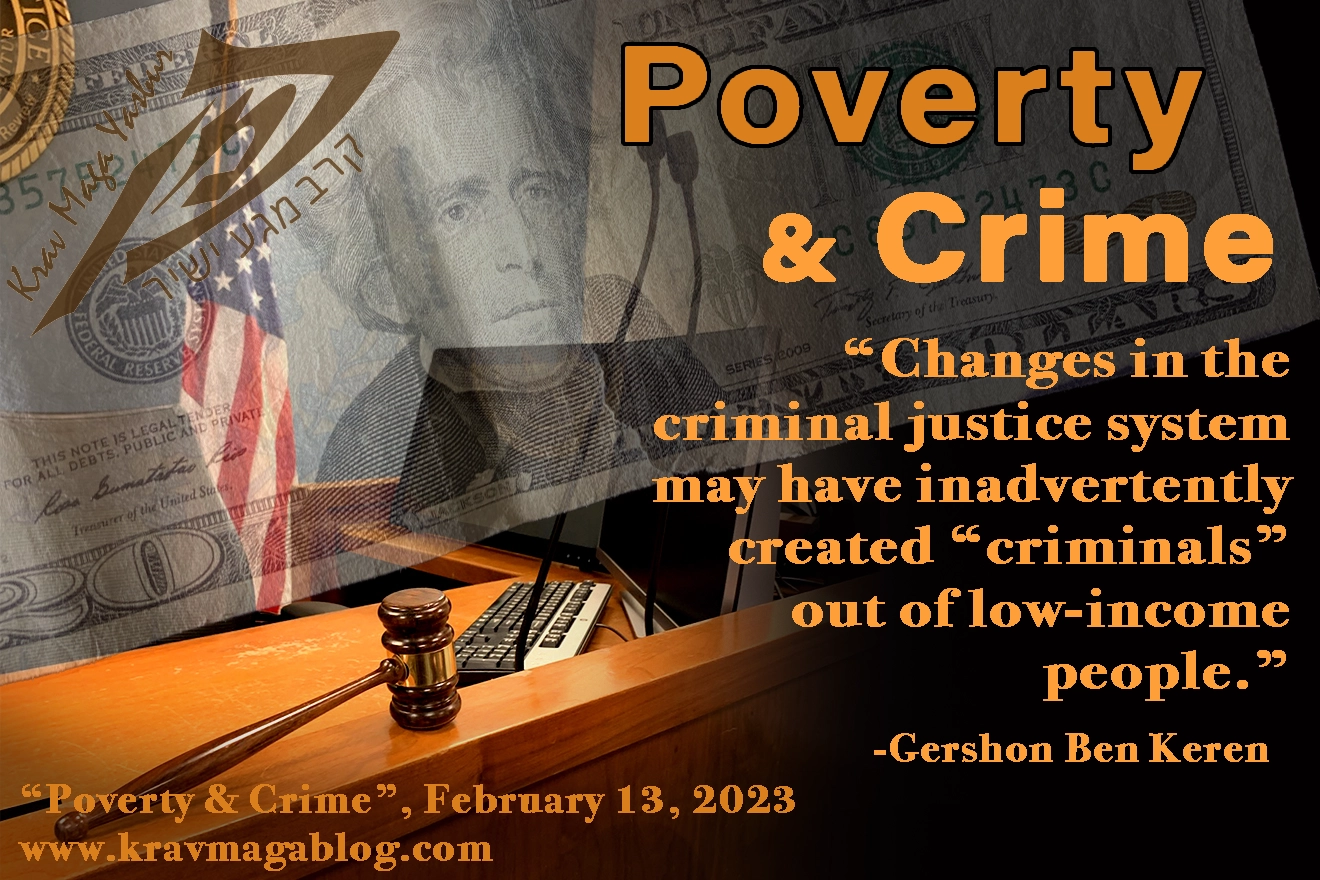Author: Gershon Ben Keren

I have written before about poverty and crime, and violent offending, stressing that the relationship between offending and poverty is not a straightforward one e.g., that in the postwar period, crime, including violent offending increased significantly up until the early 1990’s despite standards of living rising considerably, and poverty levels falling dramatically. The conclusion being that the creation of “opportunities” to offend was a more significant and important factor e.g., people had greater amounts of leisure time, and had disposable income that allowed them to spend more time away from their homes in public settings etc. You can read more about this in the articles: why crime rates rose, and why crime rates fell. However, it would be wrong to conclude that poverty, has no effect upon violence and violent offending, and in this article I want to examine some of the reasons why this is the case, as well as look at how certain changes in the criminal justice system may have contributed to increases in crime in lower-income communities. Before starting this examination, it is worth reminding ourselves that the majority of low-income people, don’t commit crimes, and that there isn’t a direct relationship between poverty and offending.
Poverty by itself does not create violent offending. It may be the underlying reason, but it is not the direct cause. However, poverty can create the conditions that lead to violent offending e.g., poverty may cause certain stresses in family life that lead to intra-familial violence; parents who are financially stressed and on edge may behave aggressively or violently towards their children, leading to a normalization of violence etc. Such conditions may be created by poverty and more common amongst low-income households, but they can exist in families which are economically stable as well. This is why it is dangerous to make a direct link between poverty and violence. We should instead look at the conditions that lead to violent offending and recognize when these conditions may be present in other circumstances as well. If parents are holding down several jobs in order to pay the rent, pay bills and buy food they may not be around to exercise “Capable Guardianship” over those they look after. Eck, put forward the idea that parents and teachers act as “handlers”, who look after potential offenders and keep them out of trouble. It is largely accepted that a fair amount of crime happens around schools, soon after afternoon dismissal i.e., the time between children and teenagers leaving the care of their teachers, and before getting home and into the care of their parents/legal guardians. Schools in low-income areas often receive lower funding, and are unable to provide the same level of services than schools in higher-income neighborhoods and districts, such as after school programs etc., that could also provide a form of “guardianship” and prevent offending etc.
Changes in the criminal justice system (CJS) may have inadvertently created “criminals” out of low-income people. The 1990’s saw the creation of “Drug Courts”. The aim of these courts was to provide alternatives to incarceration for offenders with substance abuse disorders, who had committed minor, non-violent offenses. One of these alternatives was to issue fines, rather than custodial sentences. The use of fines has also increased and been expanded for other minor offenses, such as minor traffic violations, and even jaywalking. These economic sanctions, often include administrative fees and surcharges, that accompany the fines themselves, meaning that a minor violation can cost someone several hundred dollars if they want to avoid a custodial sentence. If someone lacks the financial resources to pay a fine, or defaults on a “payment plan” then the CJS, may take away/suspend an individual’s driving license, cut public benefits they receive, or impose a custodial sentence. These “poverty penalties”, can further reduce an individual’s ability to pay the original fine e.g., if a person is reliant on their car to get to work, and their license is suspended they may end up losing their job, further inhibiting their ability to pay etc. This means that the punishment for a minor offense, such as a traffic violation, may never actually end, because the person committing the offense never has the means to pay off the fine, and the further penalties that are imposed due to non-payment. This means that the individual is perpetually labelled a “criminal”. Howard Becker (1963), formalized the notion of “labelling”, as a cause for further offending. His theory was that if someone was labelled or classed in a certain way, they may at some point start to identify with that label. The chance of this happening increased if the “label” became public, and other people started treating, and interacting with an individual based on the label. This may mean that rather than poverty simply creating offenders, the way that the criminal justice system deals with low-income offenders plays a part in creating them.
As stated, poverty itself does not create crime and violent offending however it can create the conditions that make these things more likely, and it is these things we should focus on addressing if we wish to reduce crime. Whilst, they may be more prevalent in lower income communities, they are not restricted or limited to them. The CJS, should also look to address how the expanded and increased use of fines, whilst making up for financial deficits provided by tax cuts to the voting middle-classes, may in fact act as an unfair tax upon the poor.